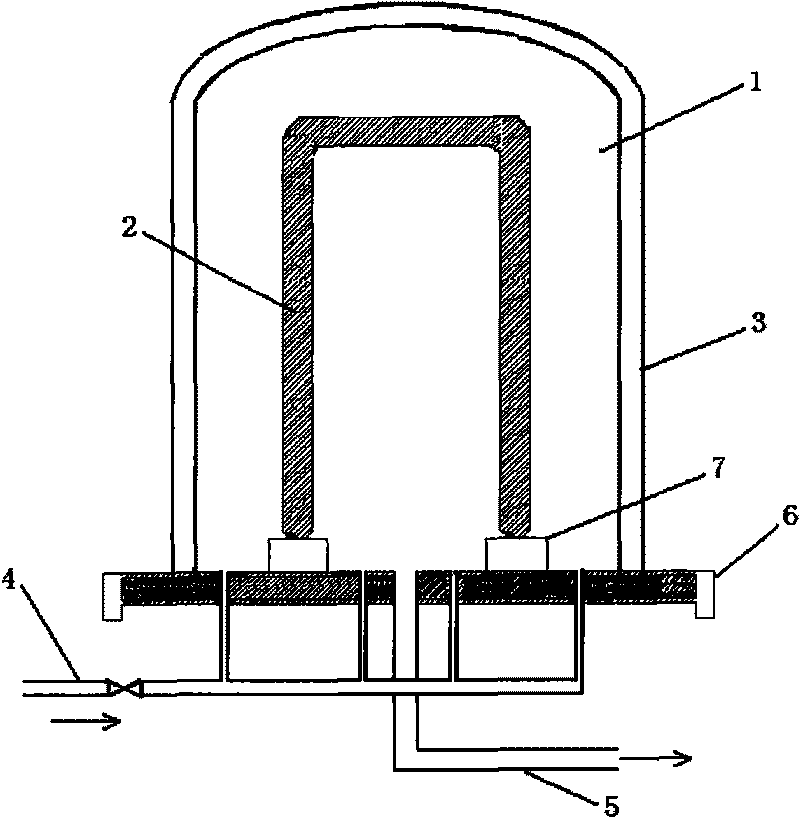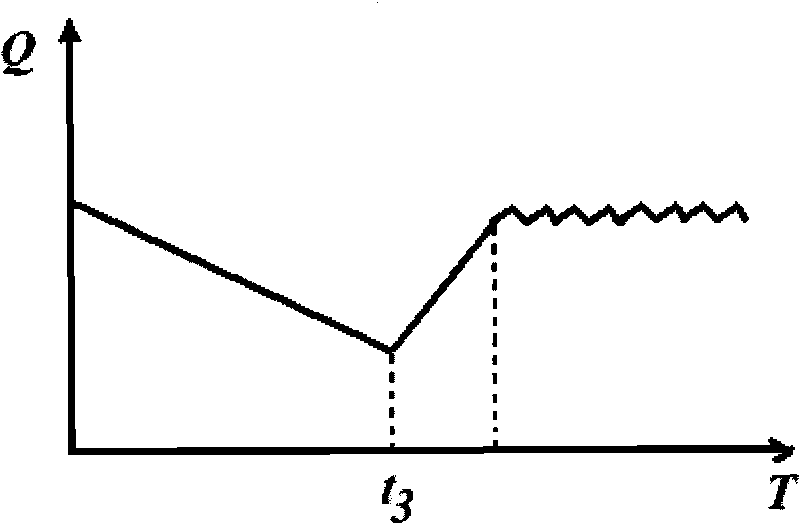Method for producing polysilicon rod
A manufacturing method and technology of polysilicon rods, which are applied in the fields of solar energy and semiconductors, can solve the problems of high equipment and operation requirements, and achieve the effect of promoting mass transfer, promoting mass transfer, and not increasing maintenance costs
- Summary
- Abstract
- Description
- Claims
- Application Information
AI Technical Summary
Problems solved by technology
Method used
Image
Examples
Embodiment 1
[0107] In this embodiment, the reaction pressure in the reduction furnace is controlled at 0.3 MPa, and the reaction temperature is controlled at 1080°C.
[0108] At the beginning (0 moment) of the manufacturing method, hydrogen and trichlorosilane are respectively charged at 35.8Nm 3 / h and 5.5Nm 3 The intake air of / h is continuously fed into the reduction furnace. At this time, the molar ratio Q value was 6.5.
[0109] First, use the time of 45 hours to make the molar ratio Q with the above expression of the aforementioned first-order piecewise function (wherein the a value, b value, c value and d value of the first-order piecewise function expression are passed according to the aforementioned in the specification sheet) Determined by calculation method, omitted here, the same below) continuously changes to 2.5, at the same time, within the aforementioned range, the intake flow rate of hydrogen and trichlorosilane increases linearly and continuously with the deposition ti...
Embodiment 2
[0128] In this example, the reaction pressure in the reduction furnace was controlled at 0.3 MPa, and the reaction temperature was controlled at 1100°C.
[0129] At the beginning (0 moment) of the manufacturing method, hydrogen and trichlorosilane are respectively charged at 36.6Nm 3 / h and 6.1Nm 3 The intake air of / h is continuously fed into the reduction furnace. At this time, the molar ratio Q is 6.
[0130] First, use the time of 40 hours to make the molar ratio Q with the above expression of the aforementioned first-order piecewise function (wherein the a value, b value, c value and d value of the first-order piecewise function expression are passed according to the aforementioned in the specification sheet) Determined by calculation method, omitted here, the same below) continuously changes to 3.0, at the same time, within the aforementioned range, the intake flow rate of hydrogen and trichlorosilane increases linearly and continuously to 128.1Nm with the increase of ...
PUM
| Property | Measurement | Unit |
|---|---|---|
| Diameter | aaaaa | aaaaa |
| Diameter | aaaaa | aaaaa |
| Diameter | aaaaa | aaaaa |
Abstract
Description
Claims
Application Information
 Login to View More
Login to View More - R&D
- Intellectual Property
- Life Sciences
- Materials
- Tech Scout
- Unparalleled Data Quality
- Higher Quality Content
- 60% Fewer Hallucinations
Browse by: Latest US Patents, China's latest patents, Technical Efficacy Thesaurus, Application Domain, Technology Topic, Popular Technical Reports.
© 2025 PatSnap. All rights reserved.Legal|Privacy policy|Modern Slavery Act Transparency Statement|Sitemap|About US| Contact US: help@patsnap.com



